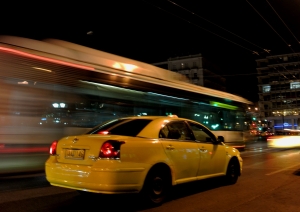Use Case B: Taxi drivers and delivery service riders, Thessaloniki, Greece
Panacea project partner: CERTH
Q1. Briefly describe the use-case in one or two sentences (site, vehicles, technologies tested etc):
This study will be conducted in Thessaloniki, Greece with both taxi drivers and delivery service riders in simulated and semi-real conditions to investigate the effect of fatigue, alcohol, drugs and stress on their shift and driving experience through several technologies offered through the PANACEA 24h holistic monitoring system.
Q2. What is the main objective of the use case?
The objective is twofold. The first series of tests will take place in our driving and riding simulator laboratories, aiming to collect data to improve the algorithms and the thresholds set for the detection, monitoring, and assessment of targeted impairing driver/ rider states. The second study will focus on the evaluation of the PANACEA system in semi-real conditions (i.e., in selected areas only) in relation to its use, usability, acceptance and impact on road safety.
Q3. What are the difficulties encountered in developing the use case?
Addressing two important types of commercial drivers, with different needs and technologies remains a challenge because the types of vehicles differ significantly. In addition, including many technologies with different levels of maturity and purpose is a considerable challenge in relation to installing and running; however, the benefits of the diversity and complexity heightens the benefits for the project and road safety in general.
Q4. How will the collection of data/study be carried out?
Data collection will be collected repeatedly through dedicated laboratory and short, semi-real sessions that will last between 1.5-3 hours each. Data collection will be GDPR compliant and anonymous, as data will be stripped of any personal information before they are handled and treated, according to both European and national guidelines.
Q5. How does the use-case contribute to the PANACEA project and to improved road safety more broadly?
Data collected in the laboratory tests will be used to improve the algorithms and thresholds for the detection of the different impairing states as well as the ability of the commercial driver to start their shift or continue to drive. We will also assess the usefulness of the PANACEA system to professional drivers and riders not only to monitor their ability to drive but also to improve their well-being through the provision of tailored countermeasures. The well-being of professional drivers and their ability to drive impacts road safety and vice versa, as they are the most frequent users of the road network.
By ensuring the professional driver is able to drive, we minimise the possibility of an accident because of human error, which accounts for 85% of accidents, and thus increase the safety of the professional driver and rider and of the rest of the other road users.



